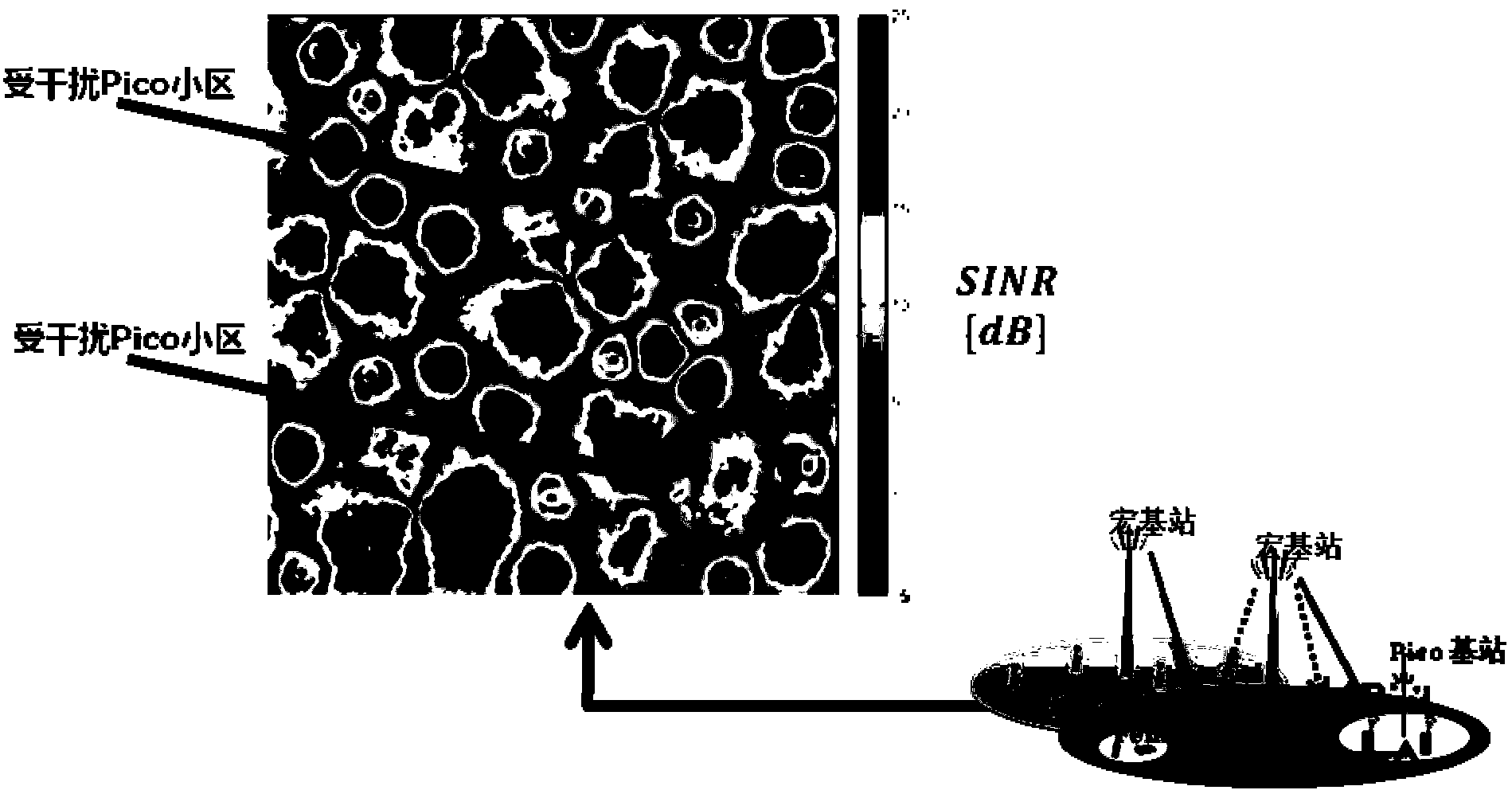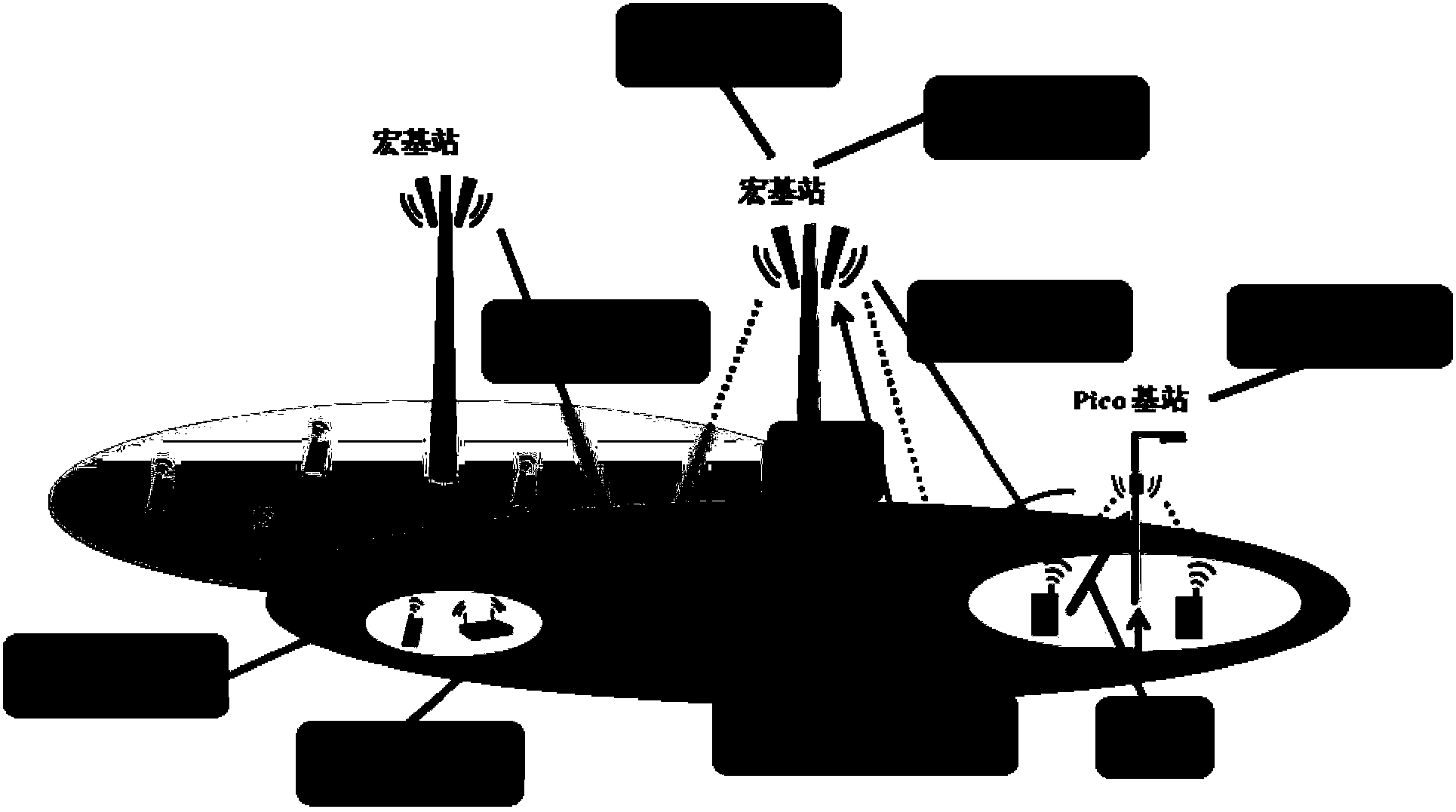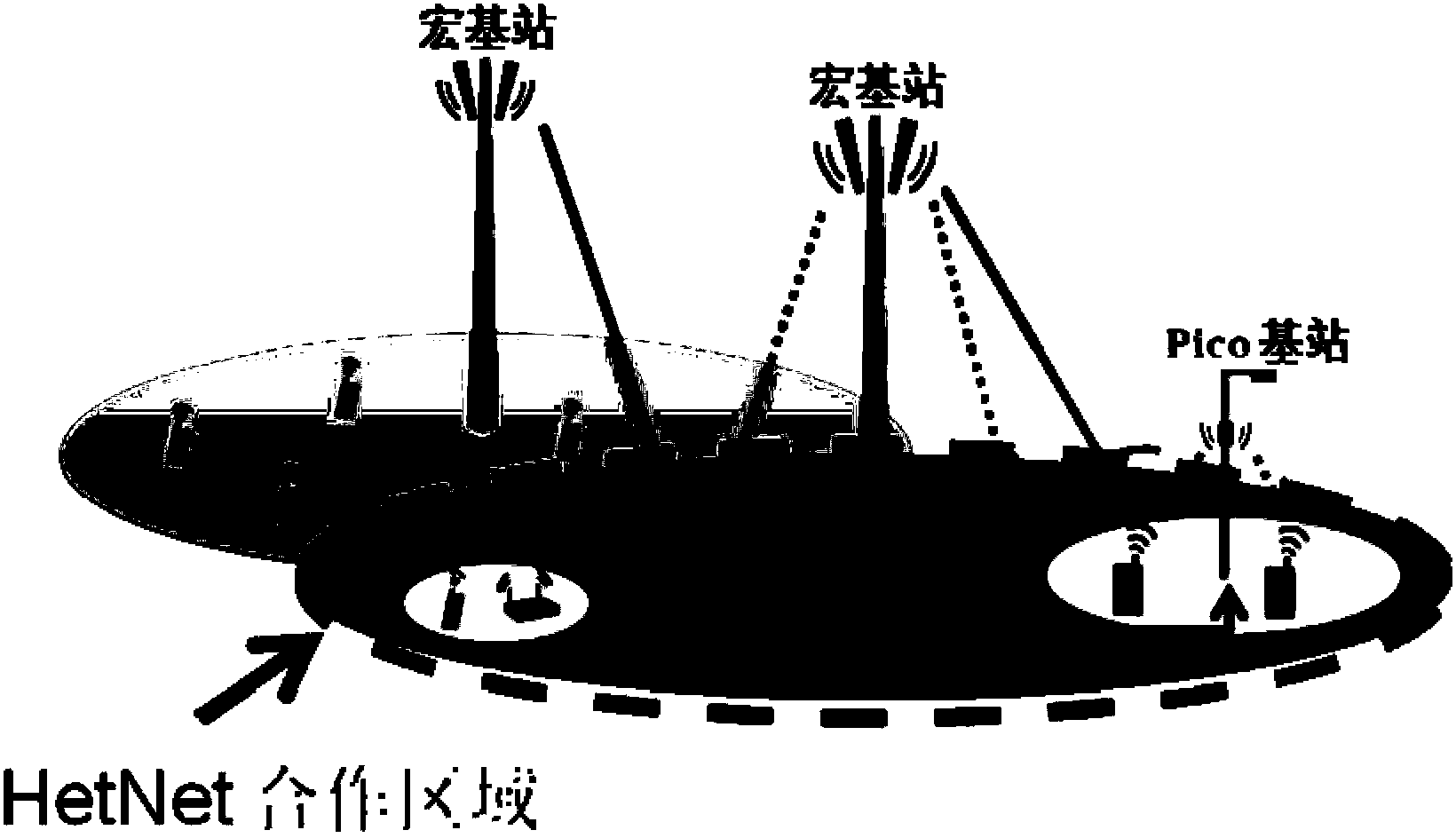User scheduling method, main base station, user equipment and heterogeneous network
A user scheduling and user equipment technology, applied in the field of communication, can solve the problems of reducing the throughput of the mobile communication system, large interference, and lack of pre-judgment of interference
- Summary
- Abstract
- Description
- Claims
- Application Information
AI Technical Summary
Problems solved by technology
Method used
Image
Examples
Embodiment 1
[0056] The HetNet network architecture is an effective way to improve coverage and capacity in the cellular network. Under the existing architecture, interfaces such as X2 have been defined between the nodes of the HetNet network. Through such interfaces, some information can be exchanged between the nodes. , for some coordinated operations. In order to deal with the interference between each other, the present invention defines a new feedback mechanism on this basis to coordinate the interference between the nodes in the HetNet, and each node independently schedules the user equipment, thereby adding a small amount of complexity Under such circumstances, the purpose of improving coverage and increasing throughput is achieved.
[0057] figure 2 A schematic structural diagram of the HetNet network provided by Embodiment 1 of the present invention is shown. For the convenience of description, only the parts related to the embodiment of the present invention are shown, and the ...
Embodiment 2
[0061] Figure 4 The implementation flow of the user scheduling method provided by Embodiment 2 of the present invention is shown, and the details are as follows:
[0062] In step S401, the main base station receives the downlink interference indication DII forwarded by the serving secondary base station serving the user equipment UE, the DII is sent to the serving secondary base station by the UE attached to the serving secondary base station, when the DII When it is greater than the preset threshold, it means that the UE is in a high DII area.
[0063] In this embodiment, the master base station receives the downlink interference indication (Downlink Interference, DII) forwarded by the slave base station, wherein the UE attached to the slave base station receives strong interference from the master base station or receives the strongest interference from the master base station, in order to improve Performance, the UE in the base station calculates the DII, then feeds the D...
Embodiment 3
[0091] Figure 5 A structural block diagram of the primary base station provided by Embodiment 3 of the present invention is shown, and for convenience of description, only parts related to the embodiment of the present invention are shown. In this embodiment, the master base station 5 includes: a downlink interference indication receiving unit 51 , an area judging unit 52 and a user scheduling unit 53 .
[0092] Wherein, the downlink interference indication receiving unit 51 is configured to receive the downlink interference indication DII forwarded by the serving secondary base station serving the user equipment UE, the DII is sent to the serving secondary base station by the UE attached to the serving secondary base station, When the DII is greater than a preset threshold, it means that the UE is in a high DII area;
[0093] An area judging unit 52, configured to judge whether the UE is in a high DII area according to the DII;
[0094] The user scheduling unit 53 is confi...
PUM
 Login to View More
Login to View More Abstract
Description
Claims
Application Information
 Login to View More
Login to View More - R&D
- Intellectual Property
- Life Sciences
- Materials
- Tech Scout
- Unparalleled Data Quality
- Higher Quality Content
- 60% Fewer Hallucinations
Browse by: Latest US Patents, China's latest patents, Technical Efficacy Thesaurus, Application Domain, Technology Topic, Popular Technical Reports.
© 2025 PatSnap. All rights reserved.Legal|Privacy policy|Modern Slavery Act Transparency Statement|Sitemap|About US| Contact US: help@patsnap.com



